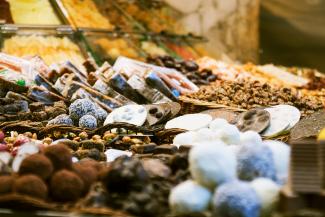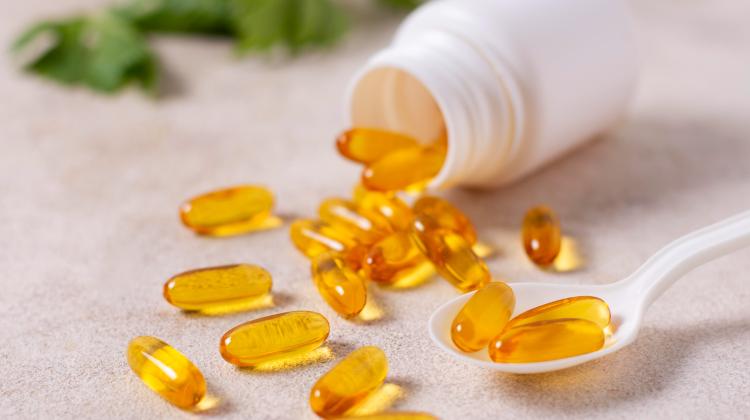The story of chocolate
Chocolate is one of the most popular and most appreciated products made from processed seeds from the cocoa tree. Although it has been known for over 4 thousand years, cocoa beans were only brought to Europe in the 16th century after the Spanish conquest of America. In those days, chocolate used to be a very expensive luxury good. Today, however, with rising consumer awareness of food and nutrition, its consumption has been growing continually.
The Olmecs, who in the ancient times lived on what today is the coast of the Gulf of Mexico, grew cocoa trees (Theobroma cacao L.). Later civilizations of the Mayans and the Aztecs continued plantations of cocoa trees and the tradition of eating their seeds. In the beginning, a drink was made of ground cocoa beans mixed with honey, vanilla, chilli, and cornmeal. The drink was only available to the elite, priests and warriors, and consumed during sacred rituals. Ancient Mayans thought highly of cocoa beans and called them 'the gift of gods'. Hence, the raw material was considered very valuable and was used as currency.
The first reports of health promoting effects of cocoa drink date back to the ancient times. According to the Aztecs, cocoa drink cured stomach and intestine problems, whereas combined with the Panama rubber tree bark (Castilla elastica) it also helped fight infections.
In the 16th century, the Spanish and the Dutch started the first cocoa tree plantations in Trinidad, Curacao, and Venezuela. These days, cocoa trees are cultivated in the entire equatorial zone, in the hot and humid tropical climate, in South and Central Americas, West Africa, Asia and Oceania.
Types of chocolate
Different types of chocolate are available in Poland. In line with regulatory requirements, chocolate is a product made from the products of cocoa and sugars which contains at least 35% of dry cocoa solids in total including no less than 18% of cocoa butter and at least 14% of non-fat cocoa solids. Chocolate that meets these requirements, depending on the content of products from cocoa beans, can be classified as semisweet (more than 50% of cocoa solids) and bittersweet (dark) (at least 70% of cocoa solids). Milk chocolate is produced in much the same way as dark chocolate however, apart from cocoa products and sugars, milk and milk products are used in its production. For this type of product, the content of cocoa solids is required to be at least 25%. Milk chocolate has a mild, delicate, and sweet taste that mainly stems from the addition of milk or powdered milk and a high content of sugar (as much as 50%). It is one of the most popular and most frequently eaten types of chocolate. Next, there is white chocolate made without the addition of cocoa solids but with larger amounts of cocoa butter (at least 20%), sugar, and vanilla.
The latest type of chocolate introduced in 2017 by Swiss-Belgian corporation Barry Callebaut is ruby chocolate which contains at least 47.3% of cocoa bean products. It has a typical pink colour and a delicate fruity flavour that is totally different from any other type of chocolate - semisweet, bittersweet, milk or white. It is made without the addition of any artificial colouring or added fruit flavouring, and its characteristic traits are mainly attributed to the ruby variety of cocoa beans. Presumably, its typical pinkish hue is associated with the omission of cocoa bean fermentation in the production process. During the process of fermentation, a number of chemical and biochemical reactions take place that produce the precursors of the typical chocolate taste and aroma; a change in the colour also occurs, from purple to light brown, as a result of the breakdown of anthocyanide pigment compounds that are naturally present in cocoa seeds. Still, it needs to be remembered that as in the case of white chocolate, the main ingredients of ruby chocolate are sugar and cocoa butter.
Is chocolate healthy?
Yes, if you choose the right type. For many years, chocolate was criticized for being high-calorie and containing saturated fats which tended to be associated with adverse effects such as obesity and caries. In the recent years, dark chocolate with a high content of cocoa products (70-90%) has been growing in popularity. The trend has been fuelled by a rising consumer awareness of the positive impact of cocoa product consumption on the human health and well-being.
What gives the diet rich in chocolate products its health-promoting properties are the nutritional components and the many bioactive substances present in cocoa beans. Particularly deserving attention are polyphenols, tocopherols, phytosterols, methylxanthines (theobromine and caffeine) , and biogenic amines (serotonin and phenethylamine).
A large group among the bioactive compounds present in chocolate are polyphenols (6-18%),dominant among which are flavonoids including monomeric flavan-3-ols, proanthocyanidins, and anthocyanins. It is now thought that flavonoids in cocoa beans are characterised by many pharmacological and biological properties, the main of which include antioxidant, anti-inflammatory, anti-allergic, antithrombotic, anti-viral, and anti-bacterial. Epidemiological studies have shown that consumption of chocolate products rich in favonoids lowers the risk of cardiovascular diseases and cancer, slows down age-related degenerative changes. That is why it is increasingly important to popularize products with high content of natural antioxidants such as cocoa beans and products derived from their processing including dark chocolate. Studies confirm the high standing of cocoa beans among food products providing the human body with polyphenols. Cocoa beans, both raw and processed, provide up to 4 times more polyphenols than black tea, green tea, and red wine. Cocoa beans also contain methylxanthines in the group of purine alkaloids, mainly theobromine (3.7%), caffeine (0.2%), and trace amounts of theophylline. Cocoa beans are also a rich source of minerals such as magnesium, iron, potassium, calcium, phosphorus as well as copper and manganese.
However, the nutritional value and the content of bioactive compounds in chocolate products is determined by a number of factors including the type of chocolate (content of cocoa solids, sugar, and other additives), the variety and origin of seeds, and cocoa bean processing after harvesting (fermentation, drying, alkalization, and roasting). That is why the content of bioactive substances including polyphenols in raw cocoa beans differs greatly from that of cocoa powder or chocolate products.
When selecting chocolate you should remember that the higher the content of cocoa solids, the higher the content of nutritional and bioactive substances in the product.
With health-promoting properties of chocolate products in mind, you can decide to go for raw chocolate. It is chocolate that is made from cocoa beans that have not been roasted, which results in its nutritional value and content of bioactive substances being the closest to that of the raw material.
You can also buy sugar free chocolate - sweetened with all kinds of sweeteners, e.g. stevia and polyols (e.g. maltitol, sorbitol, mannitol, xylitol, erythritol, isomalt, lactitol). Polyols are substances of similar sweetness but much lower glycemic index compared to sucrose. Therefore, chocolate where sweeteners have been substituted for sugar is much lower in calories, while in some cases, it has some additional functional properties (e.g. xylitol has anti-caries properties).





